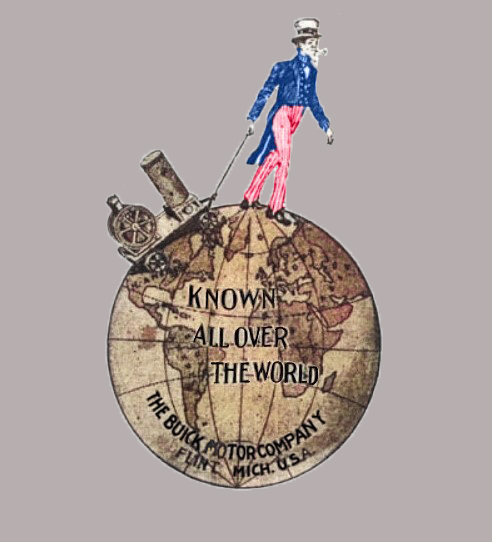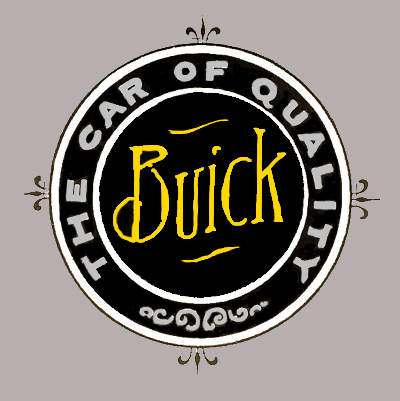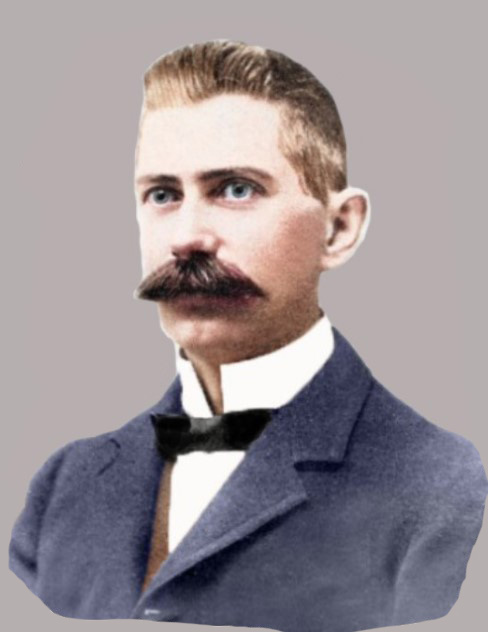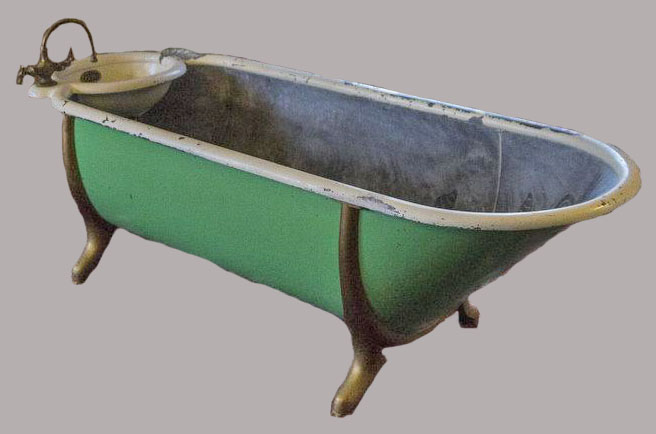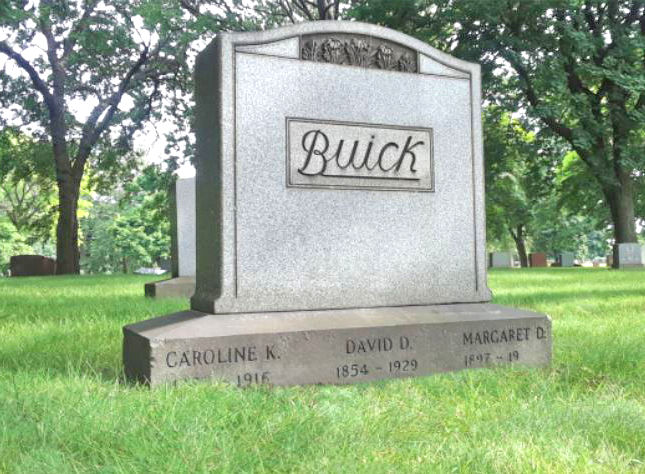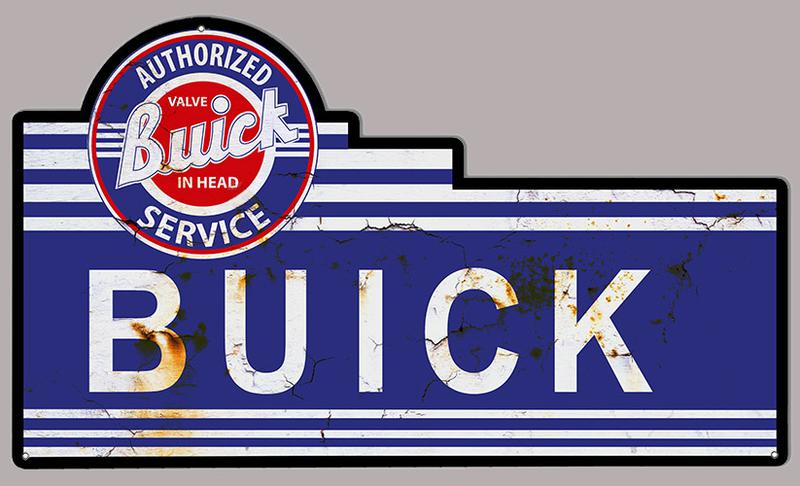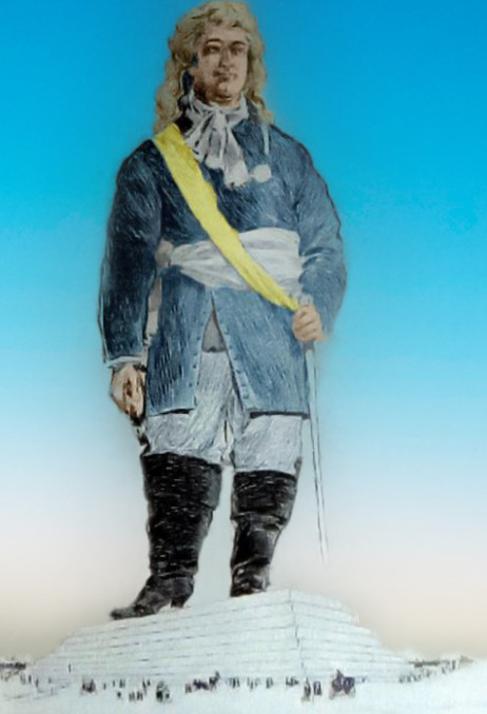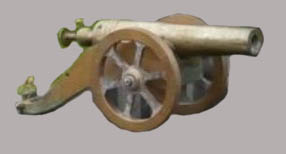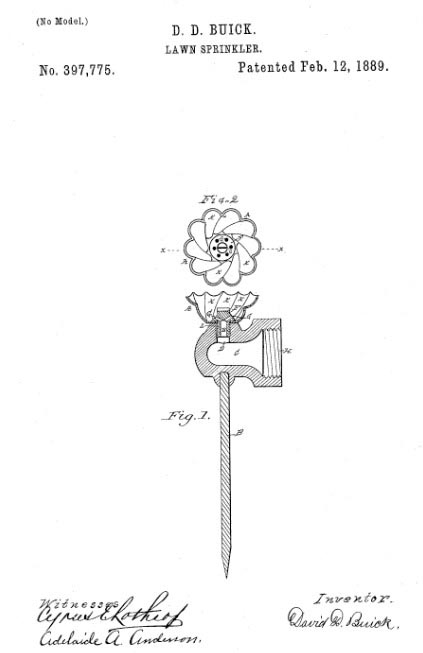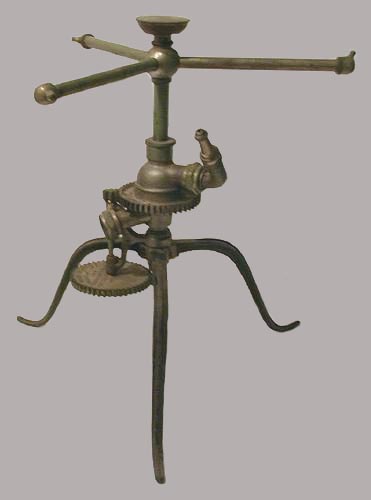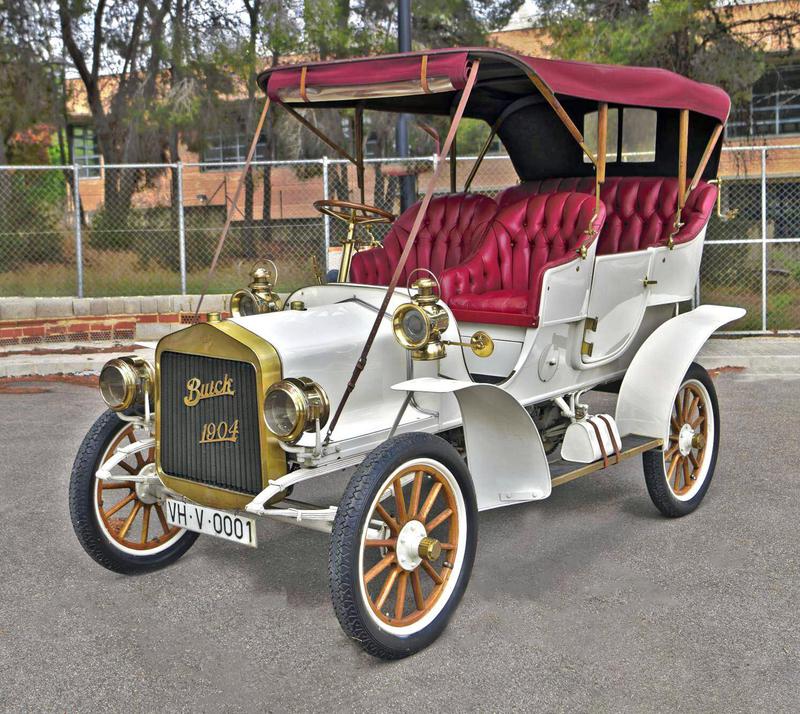Another of the odd cast of characters to have their name immortalized on car hoods and trunk lids was the Scotsman David Dunbar Buick. Fate would always play a cruel game with David Buick and in the end it seemed as if he was locked in a perpetual "stick and carrot" life, always straining to reach the carrot just as if it was pulled away by fate.
Fate dealt Buick a cruel blow when at the tender age of five his father passed away, forcing him to grow up early and he rose to the challenge. In conjunction with his grade school studies, David also delivered the Detroit Free Press in an effort to bring income into the family. David had a limited formal education. At the age of 11, he lost his temper and threw an ink well at the teacher, storming out of school, never to return. David Buick was the oldest of Detroit’s automotive patriarchs, some nine years older than rival Henry Ford. Perhaps his hard earned wisdom was an asset or perhaps it held him back. At any rate, Buick was the holder of some 25 patents so there was never any doubt that he possessed brilliant technical ability and imagination.
Buick was originally a plumber by trade. He invented the revolutionary process in which enamel could be bonded to cast iron, thus creating the white bathtubs that adorn tens of millions of homes worldwide.
Like Ford, Buick was a bit of a "mad scientist" who was in his element while tinkering away in his shop, attempting to transform his visions into something tangible. When the automotive craze hit around 1900, Buick caught the bug and began experimenting with gasoline engines. Selling his plumbing company to raise capital, he organized the Buick Manufacturing Company. In tandem with his partners, they designed the famous "valve in head" engine which would have an enormous impact on the auto industry. Early Buicks were so dependable they were often referred to as the 'doctor's car.' With the demise of Oldsmobile in 2004, Buick has now become the oldest surviving American automobile brand.
An early Buick car emblem depicting the Buick Coat of Arms, a Stag's head (yellow circle), the Scottish symbol for good luck and prosperity.
A surviving David Buick bathtub from his pre-automotive days. Like his peers Ford, Dodge, Chevrolet, etc. he was an inventive genius. It was David Buick the plumber who revolutionized every bathroom in America by inventing the process of coating enamel to steel, thus enamel coated bathtubs and sinks. Previous bathtubs were an odd consortium of iron, tin or copper with paint applied or porcelain for the rich. Naturally the paint wore off and much to the chagrin of the owner, down time was encountered while repairs were made. Buick revolutionized American bathrooms the same way he would later revolutionize the car industry.
A humble headstone for a humble man. David Dunbar Buick, Scotland's favorite son, made a name for himself in Detroit, he died in Detroit and is buried in Detroit. Like Louis Chevrolet, the Buick name has appeared on tens of millions of cars but its namesake profited little from it.
David Buick died of cancer in 1929 at the age of 74, leaving only his name on a car. His life was a minefield of bad breaks and misfortune. According to his obituary,
"Buick spent a fortune on his dream of a 'horseless carriage' and reaped poverty in return. For years he lived and worked in the very shadow of the wing of fortune. At his finger tips danced millions. Around the corner waited uncounted and almost uncountable wealth. Time after time he saw the doors of Midas swinging open before him, but always, just before he could enter those golden realms, they swung shut in his face and left him on the outside bewildered, puzzled and disappointed."
While Buick spent his final years in the shadow of obscurity teaching at a trade school in Detroit, he had the hollow satisfaction of knowing that like Henry Ford, he had helped put the world on wheels and made many a life the world over better for it because of his inventions. History should respect David Buick's significant contributions to society and remember him for what he was, a humble genius.
David Buick - The Simple Scotsman
A venerable Buick dealership sign from days gone by still proudly sporting the revolutionary Buick "Valve in Head" logo.
Faded Glory
David Buick's proposed 190-foot statue of Detroit founder Antione de la Mothe Cadillac which was to commemorate the 200th anniversary of Detroit's founding.
Even before David Buick became an automotive entrepreneur, he was highly regarded in the Detroit community. So much so that as Detroit's bicentennial approached in 1901 and preparations for a grand celebration were in the works, Buick was consulted to add his special touch to this momentous occasion.
Buick's fertile mind conjured up a 190-foot-tall statue of Detroit founder Antione de la Mothe Cadillac. It was to sit on Belle Isle atop a giant pedestal which would have towered over ships steaming along the Detroit River. As most grandiose plans usually go, the celebrational proposals were whittled down over time due to budgetary constraints and the idea never came to fruition. But what an interesting concept if the statue had stood there all these years.
David Dunbar Buick 1854 - 1929
“When we were getting the Buick Motor Company under way (1900), there wasn’t an executive in the place who ever knew what time it was. We worked until we had the day’s job done and were ready for tomorrow and then we went home – and not until then. For seven years I didn’t have a Sunday or holiday off – not even Christmas or the Fourth of July. I worked 12, 16, 18 hours some days…I tell you, the automobile business was a tough one in those days.”
David Buick - 1928
Underscoring the exhaustive effort and tremendous dedication Buick exhibited in establishing the Buick Motor Car Work, Buick reminisced about those days in the winter of his life:
“Success is mostly hard work. It’s work and it’s stick-to-it-ive-ness…I’m not worrying. The failure is the man who stays down when he falls – the man who sits and worries about what happened yesterday instead of jumping up and figuring what he’s going to do today and tomorrow. That’s what success is – looking ahead to tomorrow. No trials, no triumphs.”
- David Buick
"No trials, No triumphs"
In 1928, the city of Flint held a massive celebration for the 25th anniversary of the Buick Motor Car. Despite the fact that the whole town turned out, David Buick was not invited. Nor was Louis Chevrolet, (who raced for Buick) nor Billy Durant, who propelled the Buick name to greatness. It was one last societal snub for one of the great, if not forgotten, inventors.
The miniature cannon David Buick used to start regatta races with on the Detroit River when he was a commodore at the Detroit Yacht Club.
Yet another of David Buick's extraordinary accomplishments from 1889 was this very early patent for a lawn sprinkler, one of the first of its kind.
Buick found ways to make life's mundane tasks easier. Instead of having to waste time watering the lawn by hand, Buick now found a way to let a machine do the work, so the home owner could be at his leisure.
A splendidly restored 1904 Buick convertible touring car. Buick, was the first to develop and produce the overhead valve engine which put Buick Motor Co. on the map and set the standard for an industry.
Perhaps David Buick’s most significant contribution to the auto industry, an innovation that even 100 years later still dominates vehicle design, is the revolutionary overhead valve engine. In tandem with his resident genius engineers, Walter Maar and Eugene Richard, they developed the overhead valve engine which provided a significant increase in horse power and efficiency over the competition of the day. Early Buicks were so dependable they were often the choice of doctor’s making house calls, thus earning the moniker “The Doctor’s Car.”


